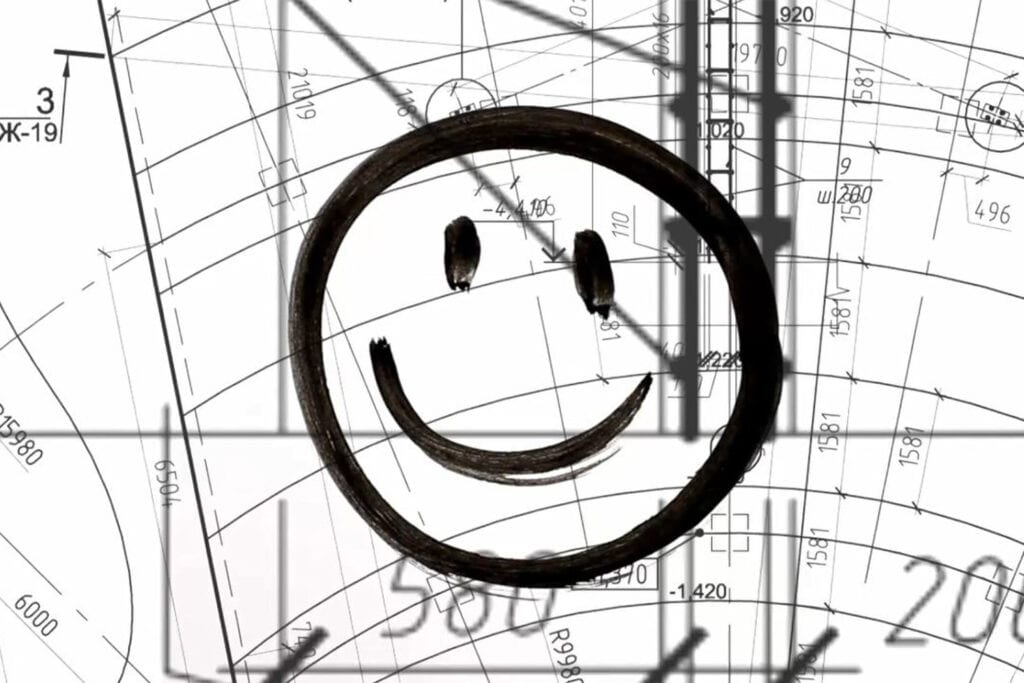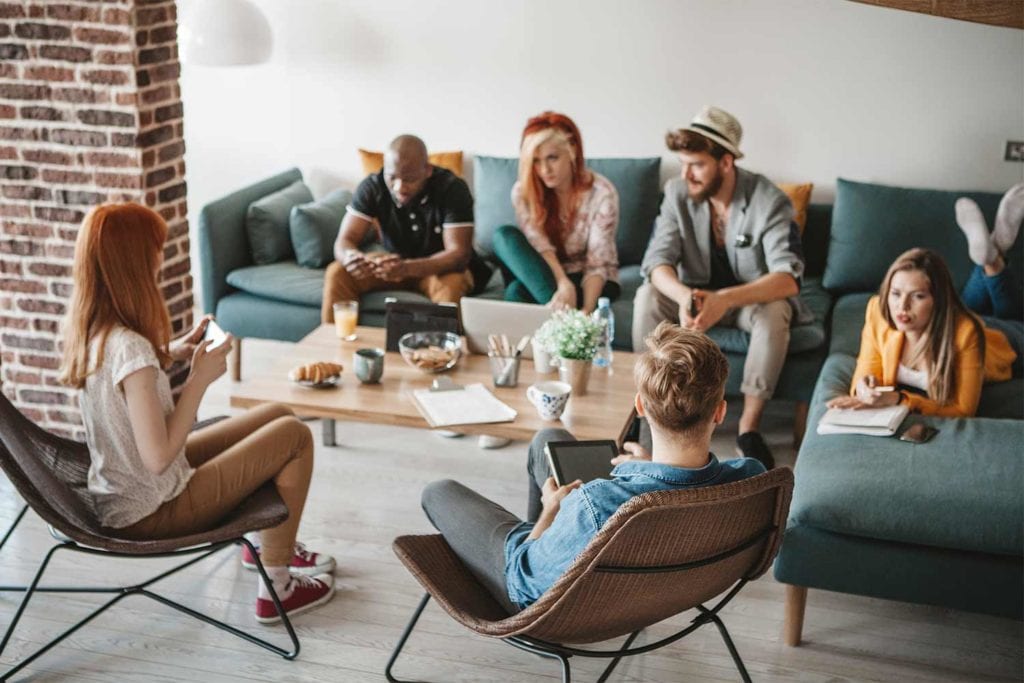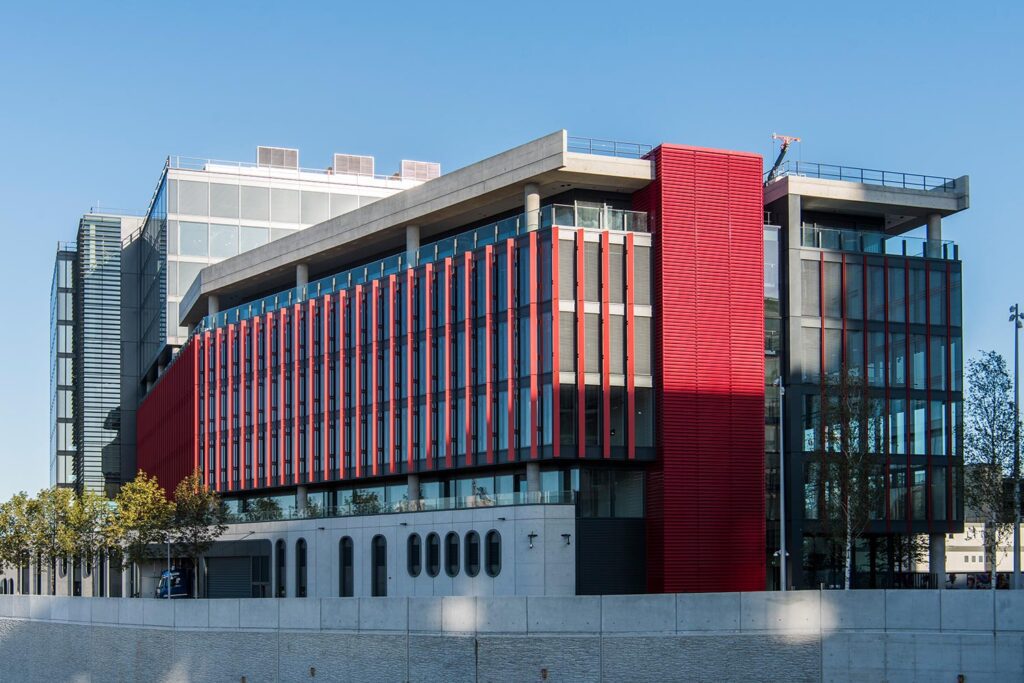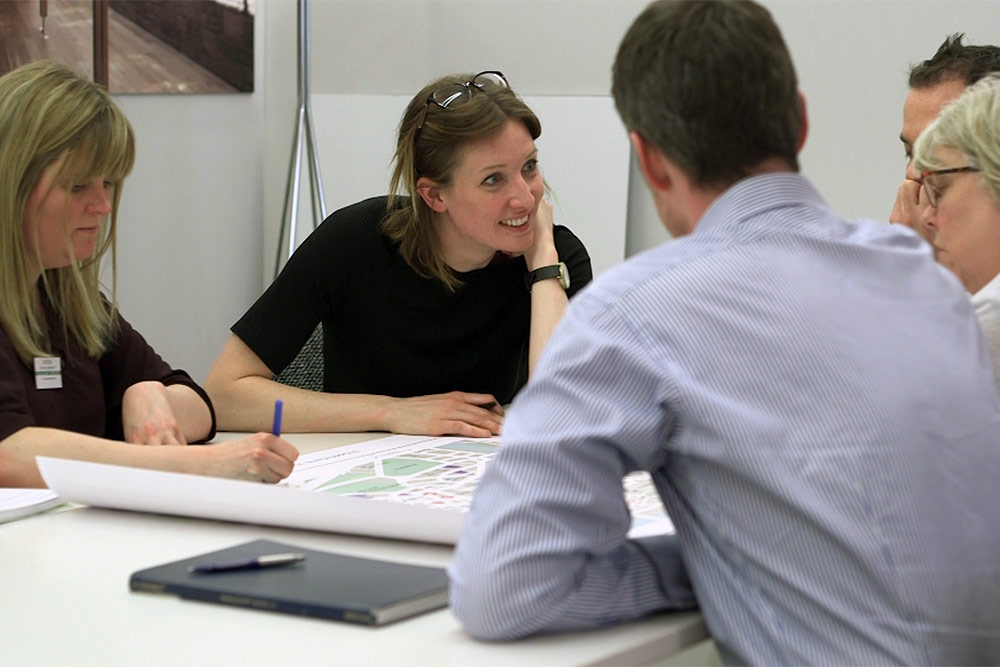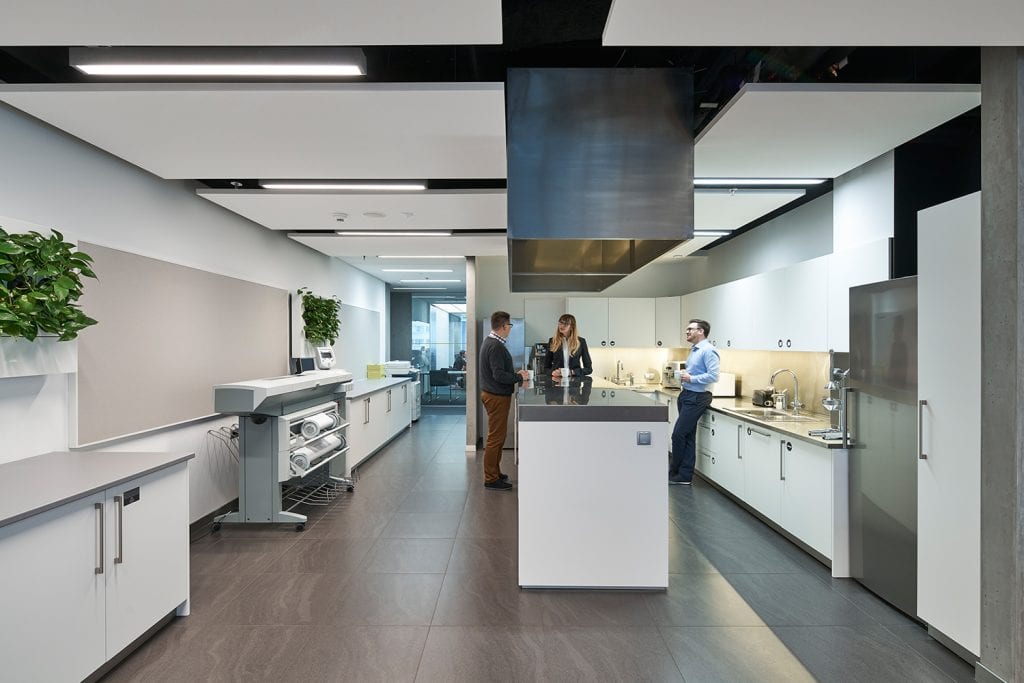How can design choices result in positive mental health outcomes?
Good mental health remains an important topic, with an ever-growing understanding of the role it plays for us all. As the world shifts into a post-pandemic way of living, it is natural that positive mental health continues to be a priority for individuals, communities, businesses and governments.
This year’s World Mental Health Day takes place on 10th October 2022 with the theme of ‘make mental health and wellbeing for all a global priority’. This creates an opportunity to consider how Buro Happold’s specialist knowledge can play a role in positive mental health outcomes for those who work, study, play and live in the buildings, places and environments we help create.
The experience of using a building or space is not influenced by a singular factor, but various interacting factors. They all need to be considered when promoting wellness, including both physical and mental health. People spend a large span of time in the buildings we develop. The environmental factors within them have a strong influence on how we experience the space and – because of that – how we feel. Air quality, thermal comfort, lighting, acoustics, interior layout, materials and furniture all play a role in the user experience and can enable everyone to flourish.
Bringing the outdoors in
Biophilic design principles increase opportunities to connect with nature and to the natural environment; it can be influential in the promotion of positive mental health outcomes. Elements of nature such as natural lighting, ventilation, landscape features, materials and geometry are key.
Buro Happold actively demonstrates consideration of these design items through our involvement in recent projects with a sustainability and wellbeing focus, where natural elements such as plants, natural materials and greenery are at the heart of the design. An example of this is the refurbishment of the David Attenborough Building at the University of Cambridge which demonstrates the use of natural ventilation, a biodiverse green roof and a living wall.
Incorporating nature can show that those who have made the space (such as your employer) care; it shows they have gone to the effort of putting plants in and improving the building or environment.
Trevor Keeling, Associate Director, Sustainability and Physics
Trevor Keeling is associate director in our sustainability and physics team. As an expert in wellbeing, sustainability and environment, he understands the power of biophilic design. He said, “There is research that shows nature is comforting. Innately, we prefer trees to concrete or grey rows of desks. Incorporating nature can show that those who have made the space (such as your employer) care; it shows they have gone to the effort of putting plants in and improving the building or environment. It’s a signal of something deeper, and that we are being cared for and looked after.”
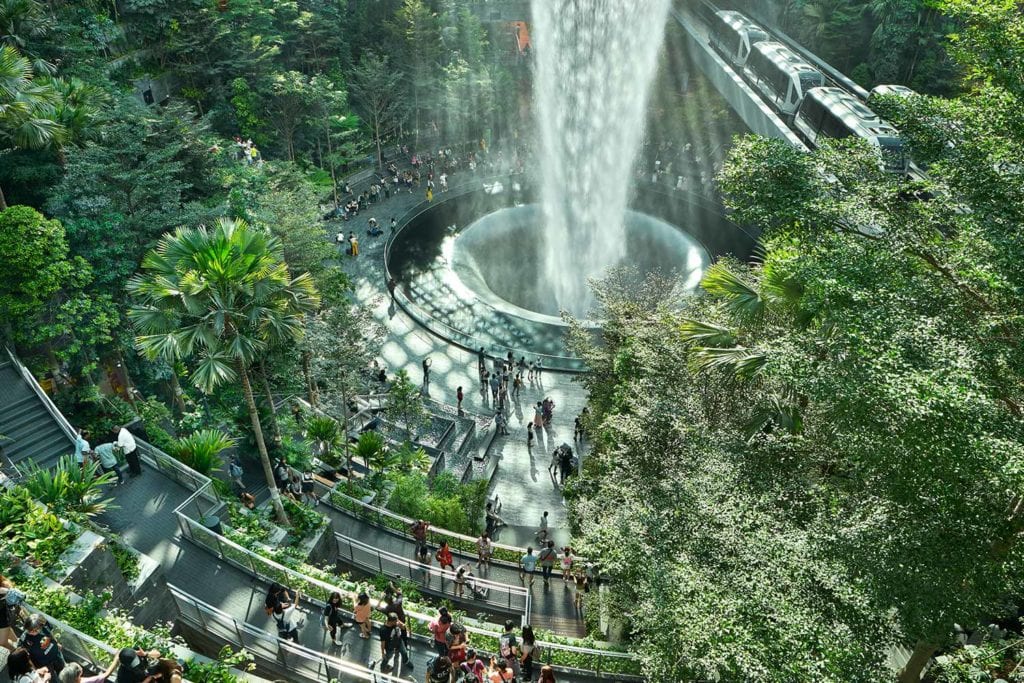
Using biophilic design principles can create both a striking visual effect and assists in positive wellbeing outcomes. The visual impact of Project Jewel at Jewel Changi Airport in Singapore speaks for itself, but the intelligent use of plants inside promotes a positive mental effect too.
The interior garden that is lush with water and greenery engages and delights visitors; it transports them from the kind of site that has the potential to feel utilitarian and unfriendly (an airport), into one where they can relax and enjoy their surroundings. Buro Happold worked alongside the architects to provide structural and facade engineering consultancy to deliver the skin of this iconic structure.
Toar Sadia, one of Buro Happold’s senior inclusive design consultants, explains how the importance of increased contact with nature can improve mental health outcomes. “Natural light, an important aspect of biophilic design, plays a critical role in the regulation of our circadian rhythms; it provides us with the spectral distribution of light that supports our biological processes. These help to regulate our hormones which support our daily activities, such as by being alert when we are active during the day and feeling tired when we are going to sleep at night. Its impact is on both our physical and mental health – the quality of our sleep, mood, and overall wellbeing.”
Toar studied at UCL; her Health, Wellbeing and Sustainable Buildings MSc dissertation explored the design preferences for quiet spaces for people with neurodivergent conditions. She said, “Something interesting that came out of my research is that while there were many design preferences that were in disagreement, everybody agreed on the importance of natural elements in providing a space for mental calm. There is something inherent in our biology which finds nature comforting.”
Useful certification and standards
People centric design is highly valued in Buro Happold, with a strong focus on providing sustainable design for occupant health and wellbeing. Adherence to appropriate certifications and standards can help with the delivery of high-quality design. The WELL Building Standard from the International WELL Building Institute is an accredited commitment to advancing human health and wellbeing in buildings and communities.
According to the organisation, WELL allows ‘buildings and organisations to deliver more thoughtful and intentional spaces that enhance human health and well-being’. Toar and Trevor are both WELL accredited practitioners. Toar said, “Standards and certifications provide tools for us to promote health and wellbeing through design. By aligning with them, we demonstrate our values and communicate to the public and building users that the building has met a certain level of design quality.”
2 Redman Place (a nine-storey office building in London) achieved WELL Gold certification, with environmental design factors that can enhance positive mental health. It has floor to ceiling windows for increased natural light, monitoring of indoor ambient noise and a large living wall. It also achieved BREAAM (Outstanding), a science-based group of validation and certification systems for sustainable built environment projects.
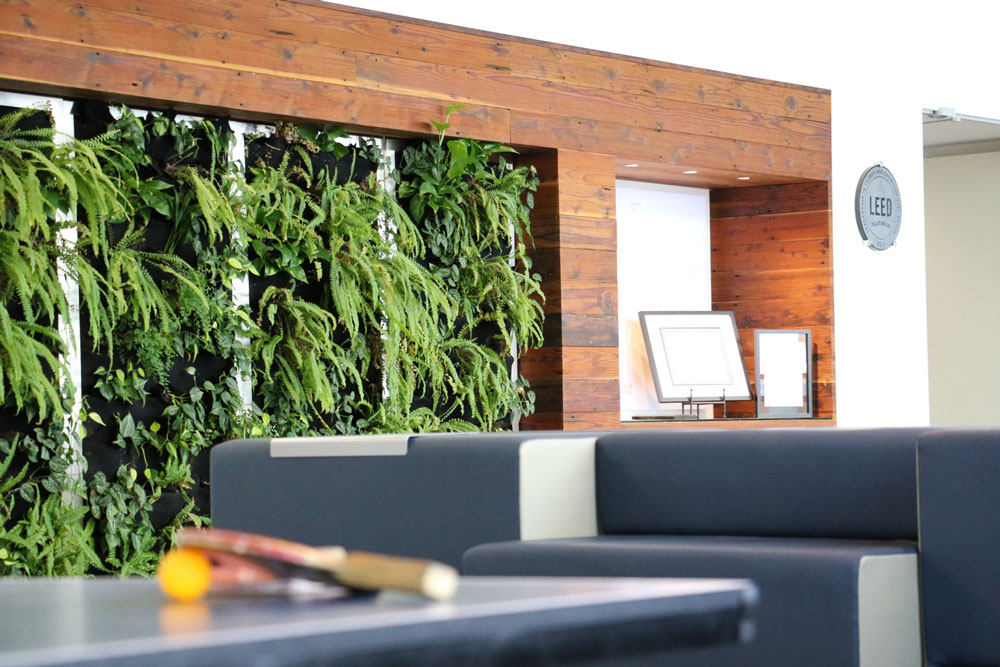
A recent innovative commercial office project, EDGE Suedkreuz, is notable for being one of the largest buildings planned as a modular timber hybrid construction in Germany, but it was also designed to focus on occupant wellbeing; this resulted in a German Sustainable Building Council (DGNB) pre-certificate in platinum and WELL Gold.
Buro Happold recognises the importance of wellbeing in our own workplaces and how it can impact our health. Our Warsaw office was the first building project in Poland to be WELL Certified™ Gold. Visual comfort, clean air, high-quality acoustic design and optimised temperature were all highlighted as important to our employees’ wellbeing. Our LA office has also been WELL Certified™ Gold.
“Flexibility, choice and control”
Workspaces, the public realm and community spaces can be built with wellness in mind, as evidenced above. But to provide for wellness for all individuals as well as cater for community health and wellbeing, design considerations need to be made on how to provide for diversity, equity and inclusion.
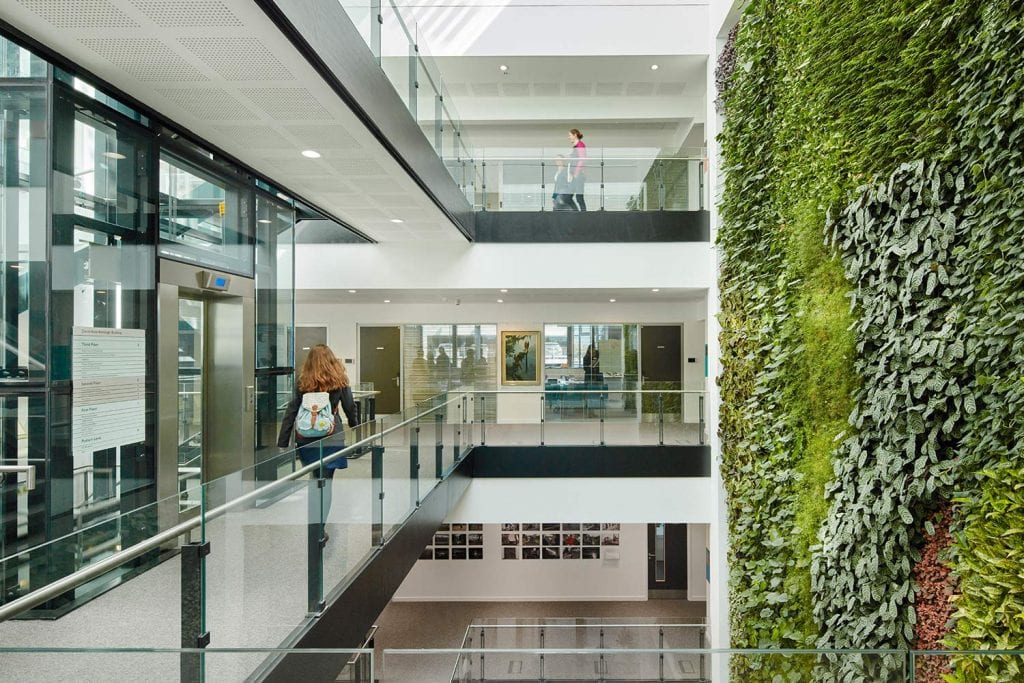
Jean Hewitt, another senior member of Buro Happold’s inclusive design team and an honorary associate professor on UCL’s Health Wellbeing and Sustainable Buildings programme, is the technical author of British Standard Institution (BSI) guidance on designing for neurodiversity which is due to be published in October 2022.
Neurodiversity means that people experience the world through their senses in different ways. “When designing for neurodiversity, we need to consider different types of spaces and the flexibility to adjust our environments, as well as providing quieter restorative spaces where someone can go and re-set,” said Jean. “That quieter type of space, as well as cooler spaces, are beneficial to people for a wide range of circumstances; for example, giving people a place to recover from stress or sensory overload, or to mitigate the effects of menopause. Just knowing that you have access to a calmer environment when needed can really help to make people feel like they have more control of their environment”.
Something that is key to good mental health is that people feel they have flexibility, choice and control over their environment.
Toar Sadia, Senior Inclusive Design Consultant
A key principle of design that can support positive mental health outcomes is choice over how a user interacts with an environment. Toar Sadia said, “Something that is key to good mental health is that people feel they have flexibility, choice and control over their environment so they can accommodate their specific needs. For instance, we all experience the environment through our senses, but differences in our sensory profile may create variations in how we experience the environment and its impact on us.
“People who have a predominantly hypersensitive sensory profile may be more susceptible to experiencing sensory overload; this may include people with neurodivergent conditions such as autism spectrum disorder or ADHD, people with mental health conditions such as general anxiety disorder or PTSD, or people with health conditions such as migraines.
“Having access to a quiet space where users can make adjustments, such as by reducing the lighting levels or catering to their thermal comfort needs, can help to regulate the senses and facilitate mental calm. Designing the environment with an awareness towards different people’s needs by providing flexibility, choice and control not only supports health and wellbeing, but also enhances people’s ability to practice self-care and manage their mental wellbeing.”
*PAS6463 “Design for the Mind – Neurodiversity and the Built Environment – A Guide” is due to be released by the British Standards Institute.
